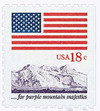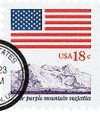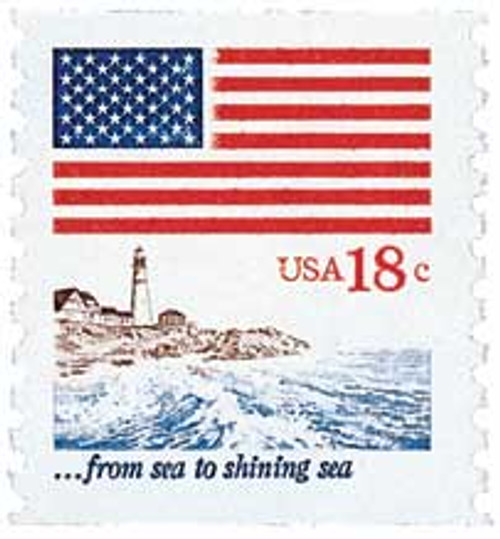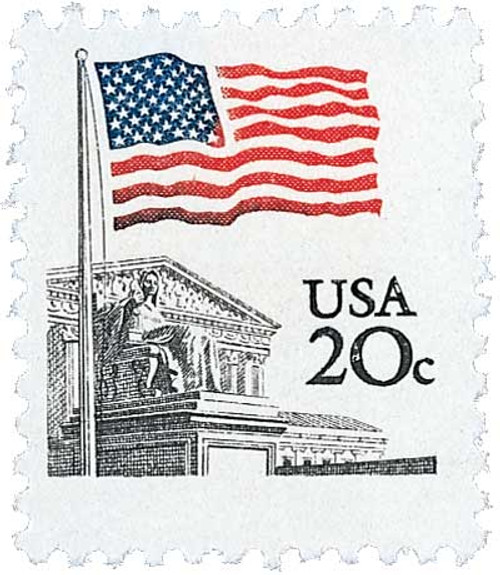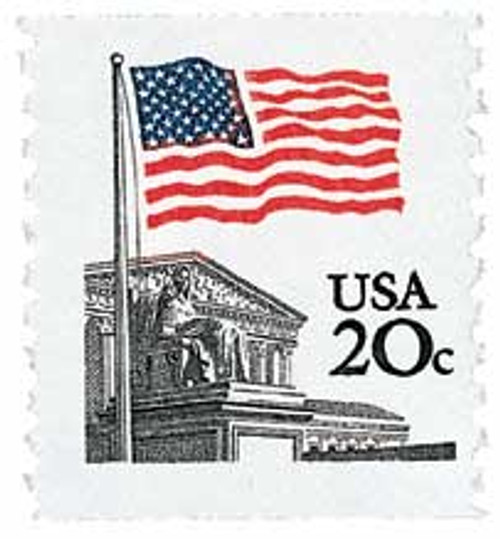
1981 18c Flags/Purple Mountains Majesties
# 1893 - 1981 18c Flags/Purple Mountains Majesties
$0.55 - $5.75
U.S. #1893
1981 18¢ Purple Mountain Majesties
1981 18¢ Purple Mountain Majesties
Issue Date: April 24, 1981
City: Portland, ME
City: Portland, ME
Printed By: Bureau of Engraving and Printing
Printing Method: Engraved
Perforations: 11
Color: Multicolored
The looming mountains straddling the Continental Divide created a barrier that is as physical as it is symbolic. When schoolteacher Katharine Bates looked out from the summit of Colorado's Pikes Peak and east over the Great Plains, she was moved to write what would become one of America's most beloved songs, "America the Beautiful." Around her lay the purple mountain majesties, tall and snowcapped, a direct contrast to the sea of grain below.
The Continental Divide, or "Great Divide", not only serves as a boundary between East and West, but also determines where North America's waters flow. It is just one of the continental divides in North America. The Laurentian Divide is an East-West separator which intersects the Great Divide at Triple Divide Peak in Montana. From that point all rain that falls there flows either east to the Atlantic Ocean (counting the Gulf of Mexico), north to the Arctic Ocean, or west to the Pacific Ocean.
The Great Divide was a barrier in the nation's westward expansion. As the U.S. followed the ideal of "Manifest Destiny" and progressed to an American flag with 50 stars for 50 states, the vast mountain ranges were just one hurdle to overcome.
U.S. #1893
1981 18¢ Purple Mountain Majesties
1981 18¢ Purple Mountain Majesties
Issue Date: April 24, 1981
City: Portland, ME
City: Portland, ME
Printed By: Bureau of Engraving and Printing
Printing Method: Engraved
Perforations: 11
Color: Multicolored
The looming mountains straddling the Continental Divide created a barrier that is as physical as it is symbolic. When schoolteacher Katharine Bates looked out from the summit of Colorado's Pikes Peak and east over the Great Plains, she was moved to write what would become one of America's most beloved songs, "America the Beautiful." Around her lay the purple mountain majesties, tall and snowcapped, a direct contrast to the sea of grain below.
The Continental Divide, or "Great Divide", not only serves as a boundary between East and West, but also determines where North America's waters flow. It is just one of the continental divides in North America. The Laurentian Divide is an East-West separator which intersects the Great Divide at Triple Divide Peak in Montana. From that point all rain that falls there flows either east to the Atlantic Ocean (counting the Gulf of Mexico), north to the Arctic Ocean, or west to the Pacific Ocean.
The Great Divide was a barrier in the nation's westward expansion. As the U.S. followed the ideal of "Manifest Destiny" and progressed to an American flag with 50 stars for 50 states, the vast mountain ranges were just one hurdle to overcome.





